What to do in Chiang Rai?
Chiang Rai is one of the best kept secrets of Thailand. Why visit Chiang Rai? Well, this northern province, near the borders of Myanmar and Laos (known as the Golden Triangle), offers the shining White and Blue Temples, trekking and hikes, and an insight into the rich Lanna culture of the country’s north. However, one of the top things to do in Chiang Rai, Thailand is definitely exploring the region’s traditional arts and crafts. Here’s how I found myself making the Thailand craft of saa paper on a Sunday morning…
Arts and crafts in Chiang Rai is no child’s play- although I must admit, the children were much better at it than the adults. Despite being a writer, I can’t say I’ve ever devoted a huge amount of time to thinking about how paper is made. However, after spending a few days in Chiang Rai, a lush, mountainous province in Northern Thailand, I now consider myself a pulp expert, for all intents and pulp-oses…
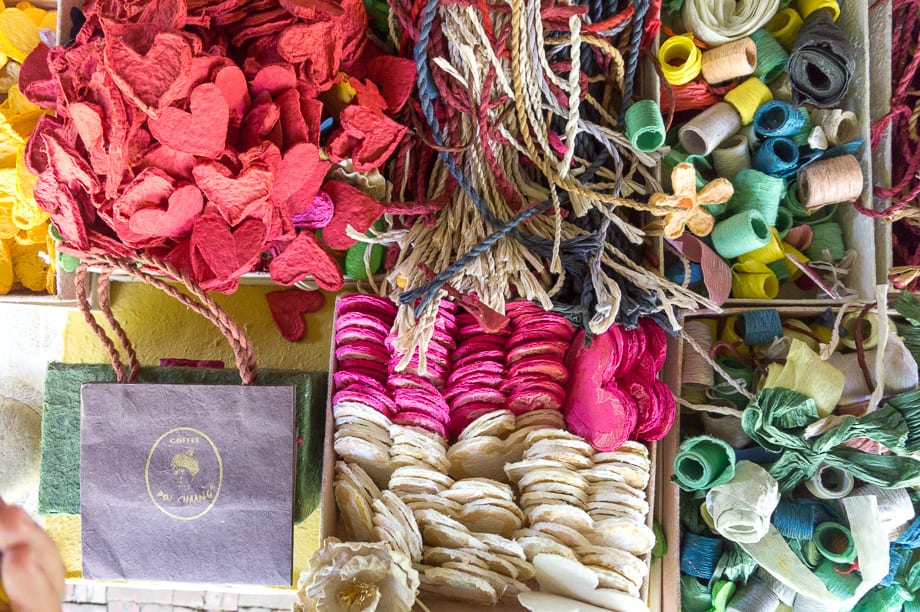
Jinnaluck
Jinnaluck Mulberry Saa Paper Community Enterprises (or simply Jinnaluck), in Chiang Rai, is one of the only places in the country where you learn about, and make your own, saa paper. Saa, or mulberry, paper, is completely handcrafted, and made from the pulp of the mulberry tree. The paper is a speciality craft of Northern Thailand, and the final product is paper that is both delicate and strong, with a unique texture, and beautifully decorated with flowers or paper designs.
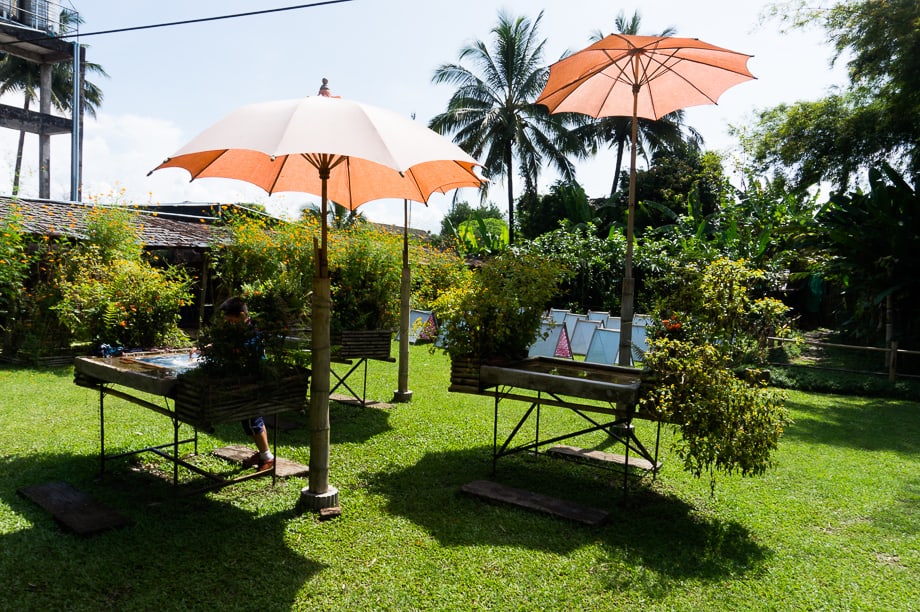
At Jinnaluck, you can go through the paper making process from start until finish, and take home your own hand-made creation. The paper making process is fun and enjoyable, and definitely puts you back in touch with your inner child, a la school art class. However, it’s also educational, as guests learn about this traditional art, and it’s also a meaningful way to interact with local communities. Jinnaluck is a female-owned local business, and by far the most unique experience I’ve found in Thailand, and I’d consider it one of the best Chiang Rai attractions. Definitely check it out if you’re planing a trip and trying to decide what to do in Chiang Rai.
Backpacking through Asia? Check out more Asian travel content here.
Saa paper making
The process begins with a baseball-sized ball of pulp, which is set atop a tray (to me, it looked like the type used by gold prospectors), which floats on top of a water tray. The pulp must be sifted and gently pulled apart to fill the tray, which basically becomes the mold for paper’s shape and size. This part was actually really tricky, and I initially started to doubt my future as a saa paper artist. However, after some help from the owner’s children (we were there on a Sunday), I got back into the zone.

In the back of the property is a garden, complete with beautiful blooms and tropical plants. To decorate your paper, you literally stroll through the garden and can pick what you’d like to use in your design. I went for a ‘simple, yet elegant’ (in my opinion) approach, and selected a few small orange flowers and some nice leaves. (Not sure how to describe the leaves, other than that they looked nice for the purposes of my design.)
Once you’ve selected your acurtrements, it’s time to channel your inner Van Gogh and design your paper. You can design however you like, and this part is seriously really fun (and likely to get competitive, if you’re with a group). Once you’ve got your design how you like, you treat it with a sort of bond which holds everything together. After a few days of drying in the sun, your paper is complete and ready to go.
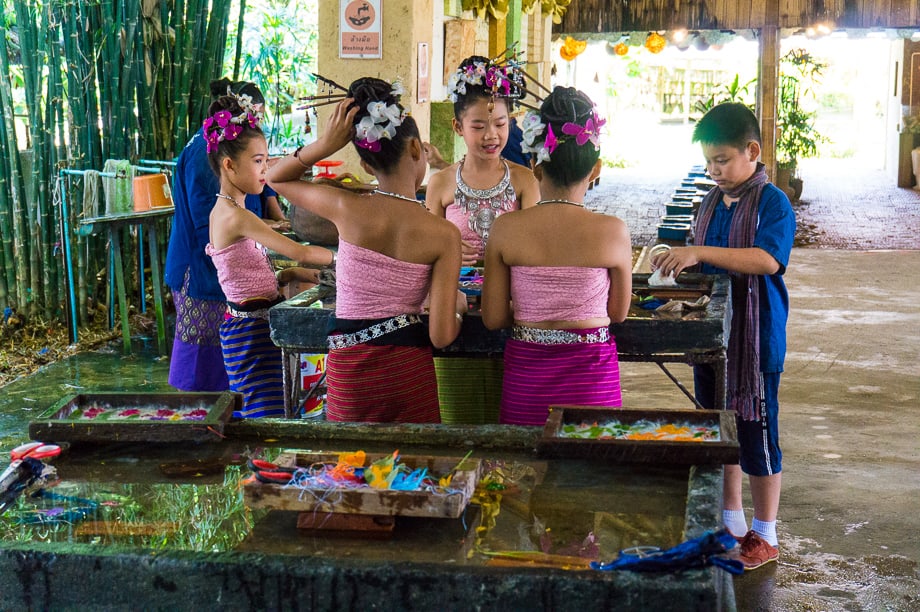
In a lovely touch of customer service, the dried paper can then be delivered back to your hotel or guesthouse, so you don’t need to return to Jinnaluck to collect.
Traditional crafts in Northern Thailand
There is a great sense of community spirit in Northern Thailand, which is supported all the way up through the Thai Government. Their OTOP initiative (One Tambon, One Product), is a fantastic program that supports the traditional arts and crafts such as Jinnaluck, or the slightly surreal yam khang, or Thai fire massage), tai lue weaving, and basket making, and allows local communities to support ethical and meaningful tourism, and also keep the traditions of their village alive.
In the mountains near Jinnaluck, a soccer team of children and their coaches were trapped in a series of caves earlier this year, due to rapid flooding, and attracted worldwide attention and subsequent media coverage of the rescue. After recovery, the team were able to visit Jinnaluck, their photo proudly hung on the wall, along with other distinguished guests, such as members of the Thai royal family.
How to get there
Jinnaluck doesn’t seem to be as well known as it deserves to be, unfortunately. It’s situated about an hour north, by car, from the town of Chiang Rai, near the border with Myanmar. (If you’re heading up to see the Golden Triangle, this would be great to do on the way up.) If you don’t have a car or motorbike, there are many Chiang Rai tours and tour operators that could get you there, and a trip to Jinnaluck would make a great day trip from Chiang Rai.
It is recommended to make a booking in advance. A local guide is also recommended, if you are not fluent in Thai. Staff do speak some English, but you’re likely to get more out of the experience with a local guide.
Jinnaluck also has an on-site cafe and shop.
Opening hours: Daily 9am- 4pm Contact: +668-1883-9062. E-mail: [email protected]
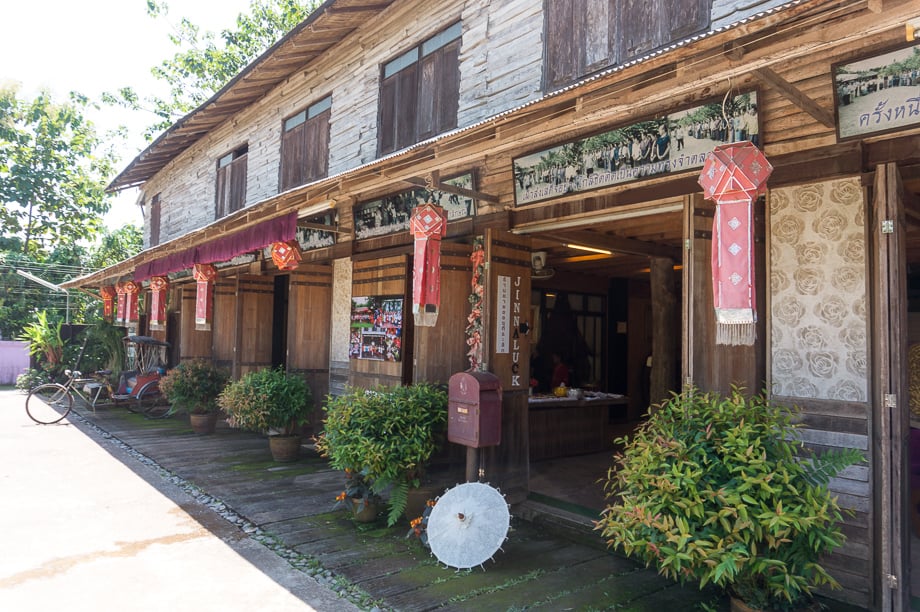
The writer visited Thailand as a guest of the Thailand Authority of Thailand, but all opinions all her own.

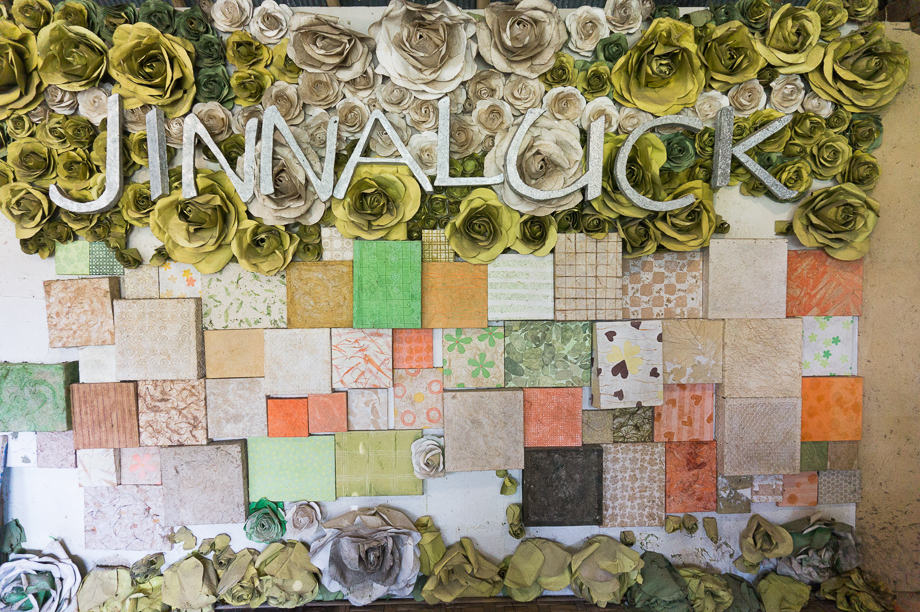

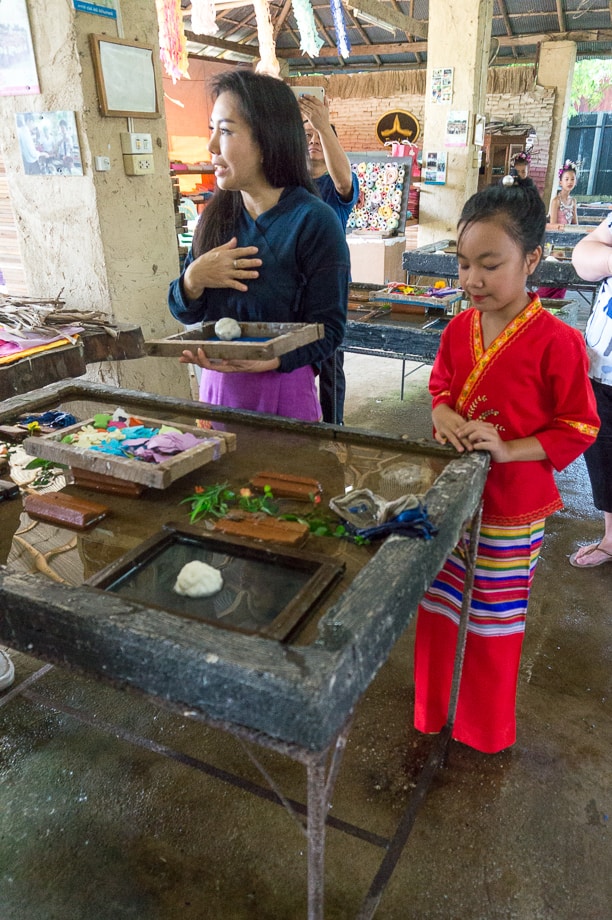
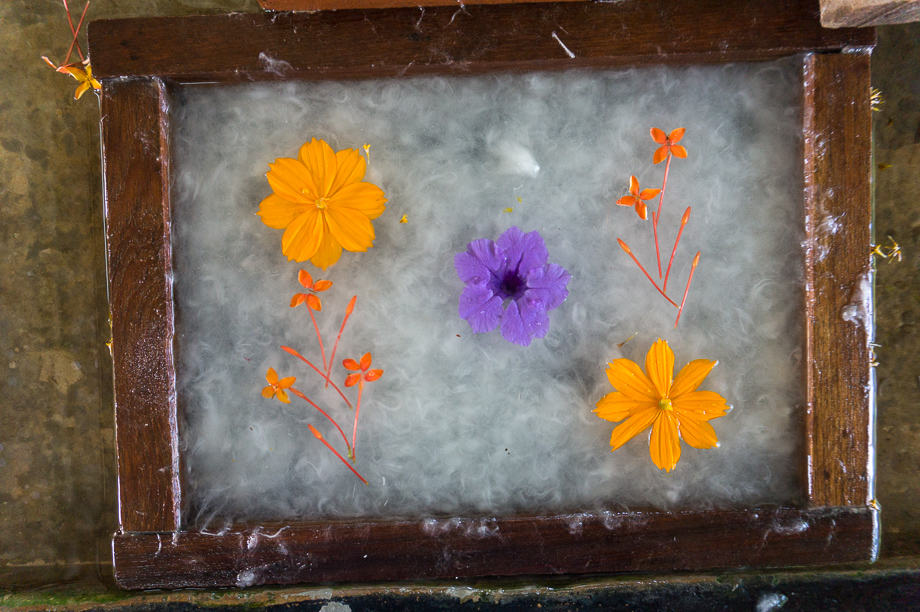

Very interesting – hope to visit
amazing